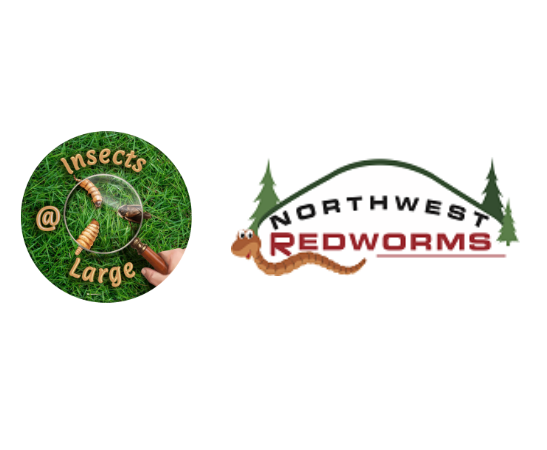Types of Compost:
Vermicompost: This is the most beneficial process for composting food waste. Along with redworms, this includes composting with bacteria, fungi, insects, and other bugs. Some of these guests break down the organic materials for the others to eat. Redworms eat the bacteria, fungi, and the soft food waste, and then deposit their castings. Oxygen, moisture and bedding are required to keep this compost healthy. You feed this compost in layers of food waste and bedding (you do not turn this compost, but occasional peeking is OK).
This is a medium maintenance compost since you need to feed your redworms and monitor the conditions. If you don't keep up with the feeding they will leave. Redworms are good for producing nutrient dense vermi-compost (mulch with castings). The longer you wait the more your compost will eventually become pure castings.
Aerobic Compost: Is compost with air breathing microorganisms that break down the waste material. Aerobic composts are usually made of leaf debris and grass clippings. The high nitrogen waste (grass clippings or other green material) will grow bacteria so rapidly that it will create high temperatures up to 170 degrees (you can see the steam in the picture). The leaf material provides the space for airflow that bacteria need to live. As the compost breaks down and settles the air is cut off and the heat dissipates. This type of composting is high maintenance, since it will need to be turned often to keep air and moisture in the system to keep the microorganisms alive and your temperatures up. When done correctly the organic waste will break down quickly and is not prone to smell.
This type of compost is good for all volumes of compost. Once it is done heating up it also becomes food for redworms and other soil organisms.
Larvae compost:
Anaerobic Compost: Often confused with aerobic composting (in name only) this is the compost you do not want. Anaerobic compost is the one that creates the awful smell most people associate with composting. This happens when your compost goes wrong and gets too dense or wet. Your aerobic bacteria suffocate and are replaced with anaerobic bacteria that live without air. They create ammonia's and methane that are released into the air and create some unforgettable putrid smells. Common reasons for this to happen is when a person piles up just grass clippings or food waste without mixing in the proper amount of carbons (leaf debris, wood chips, sawdust or other carbon rich material).
Rot - Low maintenance, throw it in a pile and wait a couple years or decades. This is the attempt at aerobic composting; you just stack your debris in a pile and do nothing. It will generally just sit and dry out, in the center of the pile the mold spores and few bacteria will sit and wait for the rain/moisture to come. When the occasional bits of humidity works its way in there is some activity, but very little, so the process is slow. Success is assumed since there is no smell, but when you finally peek in the middle to see what is going on you find the same leaf preserved like it was pressed in between the sheets of a book. Solution: see aerobic composting.

